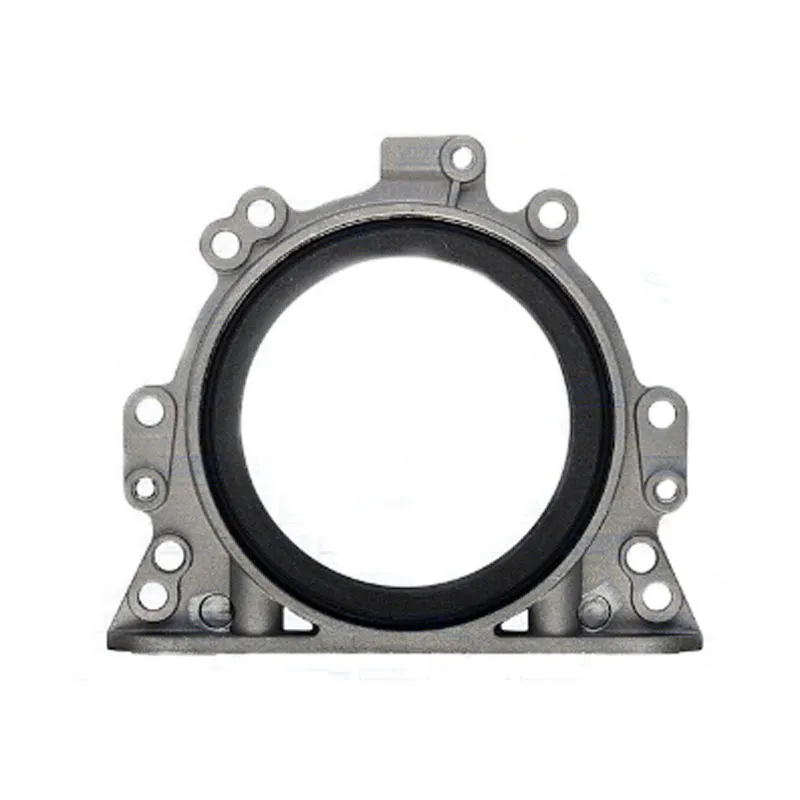Flat Fiberglass Gasket Applications and Benefits for Sealing Solutions in Various Industries
Understanding Flat Fiberglass Gaskets Applications, Advantages, and Installation
Flat fiberglass gaskets are essential components in various industrial applications, known for their remarkable durability and resistance to environmental factors. Fiberglass material, composed of fine glass fibers, offers unique benefits that make these gaskets suitable for sealing in a range of conditions, particularly in high-temperature and chemically aggressive environments.
Composition and Manufacturing
Flat fiberglass gaskets are produced by consolidating glass fibers and resins into a cohesive and robust material. This composite structure not only provides outstanding tensile strength but also ensures resistance to degradation under extreme heat and chemical exposure. The manufacturing process can involve different forms of fiberglass—such as woven, non-woven, or chopped strands—depending on the particular requirements of the application.
Typically, these gaskets are fabricated through various techniques, including compression molding, which enables precise designs and dimensions. The addition of fillers, such as graphite or PTFE, can further enhance the performance of fiberglass gaskets, providing additional chemical resistance and improving sealing properties.
Key Advantages
1. Temperature Resistance One of the standout features of flat fiberglass gaskets is their ability to withstand extreme temperatures. They can often perform adequately in conditions exceeding 500°F (260°C), making them ideal for applications in the oil and gas, power generation, and chemical processing industries.
2. Chemical Resistance Fiberglass gaskets show excellent resistance to a wide array of chemicals, including acids, bases, and solvents. This characteristic makes them particularly valuable in environments where exposure to harsh substances is a concern, such as in reactors, pumps, and tanks.
3. Dimensional Stability The inherent stability provided by the fiberglass material ensures that the gasket maintains its shape and size over time, reducing the risk of leaks caused by deformation. This property is crucial during thermal cycling, where materials expand and contract due to temperature changes.
4. Low Compression Set Flat fiberglass gaskets exhibit a low compression set, meaning they can recover their shape effectively after compression. This characteristic helps maintain a tight seal over extended periods, which is vital in preventing leakage in critical applications.
5. Lightweight and Cost-Effective Compared to metal gaskets, flat fiberglass gaskets are significantly lighter, which can reduce shipping and handling costs. Additionally, with their long-lasting performance, they can also lead to reduced maintenance expenses over time.
flat fiberglass gasket

Applications
Flat fiberglass gaskets find utility in various sectors
- Chemical Processing In facilities where corrosive substances are handled, these gaskets provide a reliable sealing solution that minimizes the risk of leaks. - Power Generation Many power plants utilize these gaskets in turbines and heat exchangers where high temperatures and pressures are prevalent. - Oil and Gas In the petroleum industry, the need for durable and reliable sealing materials in pipelines, valves, and drilling equipment makes fiberglass gaskets invaluable. - Food and Beverage Even in applications involving food, specialized fiberglass gaskets that meet regulatory standards can be used, providing safe sealing solutions.
Installation Considerations
Installing flat fiberglass gaskets requires attention to detail to ensure optimal performance. Here are some steps to keep in mind during installation
1. Surface Preparation Clean the mating surfaces thoroughly to remove any dirt, grease, or old gasket material, as contaminants can lead to inadequate sealing.
2. Proper Alignment When placing the gasket, ensure it is properly aligned with the bolt holes and other mechanical connections to prevent stress concentration.
3. Torque Specifications Follow the manufacturer's torque specifications when tightening bolts. Over-tightening can compress the gasket excessively, while under-tightening can lead to leaks.
4. Visual Inspection After installation, a visual inspection should be performed to verify that there are no gaps or misalignments in the gasket setup.
Conclusion
Flat fiberglass gaskets are integral to maintaining the integrity of various systems across multiple industries. Their combination of durability, chemical resistance, and temperature tolerance makes them an excellent choice for demanding applications. By understanding their advantages and proper installation techniques, users can ensure reliable and leak-proof operations in their respective fields. Investing in high-quality flat fiberglass gaskets not only enhances safety and efficiency but also contributes to reduced operational costs and improved reliability over time.
-
Understanding Automotive Oil Seals: Essential Components for Engine and Shaft Protection
News Jul.30,2025
-
The Importance of Heavy Duty Seals in Industrial and Residential Applications
News Jul.30,2025
-
Exploring Industrial Oil Seals: From Felt Oil Seals to TTO and CFW Solutions
News Jul.30,2025
-
Essential Guide to Oil Seals: From Radial to Metal-Cased Seals for Industrial Reliability
News Jul.30,2025
-
Choosing the Right Oil Seals and Gaskets for Industrial and Automotive Applications
News Jul.30,2025
-
Cassette Seals: Durable Sealing Solutions for Harsh Environments
News Jul.30,2025
-
Understanding the Front Main Engine Seal: Purpose, Maintenance, and Installation
News Jul.29,2025
Products categories















